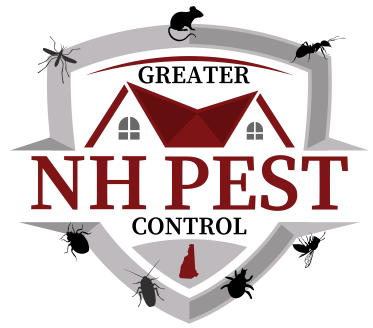About Wasp, Hornet, Yellow Jacket & Other Stinging Insect Control
Overview of Stinging
Insect Control
Stinging insects in New Hampshire can pose a risk to individuals who come into close proximity to their nests. It’s crucial to be aware of the signs of nest-building and take preventive measures, such as regularly inspecting potential nesting sites and seeking professional pest control services for safe and effective nest removal. Managing these stinging insects requires a combination of vigilance, proper landscaping practices, and timely intervention to create a safer and more enjoyable outdoor environment for residents and businesses in the region.



RESIDENTIAL OR COMMERCIAL: WE HAVE YOU COVERED!
Our Stinging Insect
Control Programs
One Time
Service
Looking for a quick fix? - Home inspection to understand pest problem
- Liquid residual spray on exterior for prevention
- Interior crack and crevice treatment for prevention
- Pests Included: rodents, ants, roaches, flies, wasps, hornets, yellow jackets, stink bugs, box elder bugs, ear wigs, and occasional invaders
Quarterly
Prevention
Looking to control pests all year long? - Home inspection to understand pest problem
- Liquid residual spray on exterior for prevention
- Interior crack and crevice treatment for prevention
- Pests Included: rodents, ants, roaches, flies, wasps, hornets, yellow jackets, stink bugs, box elder bugs, ear wigs, and occasional invaders
- Quarterly Prevention Visits
Power Shield
Looking for our best pest solution?- Home inspection to understand pest problem
- Liquid residual spray on exterior for prevention
- Pests Included: ants, spiders, wasps, hornets, yellow jackets, stink bugs, lady bugs, box elder bugs and occasional invaders
- Power shield spray from eaves to foundation, around windows and doors
Customized Commercial Programs
We tailor our service to your specific business need!- Monthly or Every other Month services
- Prompt Service
- We service a wide variety of businesses: (Property Management Buildings, Restaurants, Warehouses, Schools, Office Buildings and more)
- Educate the customer on how they can help keep pests out of their business
5 Things That Attract Stinging Insects
Avoid and Monitor These Things To Help Prevent Stinging Insects In Your Home & Business

Sweet Scents
Stinging insects are attracted to sweet scents, making floral blooms and sugary spills prime locations for nest-building.

Food & Spills
Open food containers and spills outdoors attract stinging insects searching for food sources, increasing the risk of nests near dining areas.

Overgrown Vegetation
Overgrown vegetation provides ideal nesting sites, creating sheltered environments near structures and increasing the risk of encounters with humans.

Sheltered Eaves
Eaves and roof overhangs offer sheltered spaces that stinging insects find attractive for nest-building, especially during warmer months.

Nesting Materials
Stinging insects are drawn to available nesting materials like wood and plant fibers, making areas with debris and clutter more enticing for colony establishment.
Entry Methods: Stinging Insects
Where are common locations for entry?
- Eaves
- Roof Overhangs
- Wall Voids
- Trees, Gardens & Lawns





STEPS TO HELP YOU CONTROL STINGING INSECTS LIKE BEES, WASPS AND HORNETS
Effectively controlling stinging insects such as wasps, hornets and yellow jackets in New Hampshire involves a strategic and cautious approach.
- Begin by regularly inspecting potential nesting sites, paying close attention to eaves, roof overhangs, and tree branches near structures.
- Promptly address any signs of nest-building to prevent colonies from establishing themselves.
- Implementing proper landscaping practices, such as trimming overgrown vegetation and maintaining a tidy outdoor environment, can reduce the attractiveness of your property to these insects.
- If nests are identified, it’s crucial to avoid DIY removal, as stinging insects can become aggressive when threatened.
- Instead, seek professional pest control services for safe and effective nest removal, ensuring the well-being of both residents and the surrounding environment.
Combining these steps promotes a safer outdoor experience, allowing residents and businesses in New Hampshire to enjoy their spaces without the threat of stinging insect infestations.

Inspect:
When seeing pests, find out where they are getting in or give us a call!

Protect:
Fixing entry method points so pests can no longer have access into your home or business.

Maintain:
By always being proactive of what attracts pests and keeping a clean environment.
Common Stinging Insect Control FAQs
Below are common Stinging Insect Control FAQs, if you have any other questions please do not hesitate to reach out.
The most effective methods for stinging insect control include regularly inspecting your property for nests, sealing cracks and crevices where insects can enter, maintaining clean outdoor spaces to avoid attracting stinging insects, and using professional stinging insect control services to safely remove nests and apply preventative treatments.
For safe wasp control, avoid swatting at wasps or disturbing their nests. Instead, identify the nest location and contact a professional wasp control service to handle the removal. Professionals use specialized equipment and techniques to safely eliminate wasps and prevent future infestations.
If you find a hornet nest on your property, do not attempt to remove it yourself, as hornets can be highly aggressive. Contact a professional hornet control service to assess the situation and safely remove the nest. Professional services ensure effective hornet control and minimize the risk of stings.
To prevent yellow jackets from nesting in your yard, keep outdoor areas clean and free of food and drink spills, seal garbage cans tightly, and inspect your property for any potential nesting sites. If you notice yellow jackets, contact a professional yellow jacket control service to address the problem before it escalates.
Professional stinging insect control services offer several benefits, including expert identification of stinging insect species, safe and effective removal of nests, and application of preventative measures to reduce future infestations. These services cover all aspects of wasp control, hornet control, and yellow jacket control, ensuring your property is safe and free from stinging insects.
